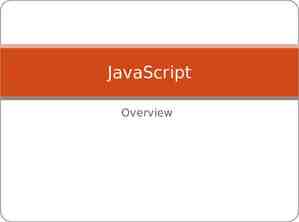Welcome to Mr. Bennett’s AP Biology at Career Center HS Please pick
20 Slides1.51 MB
Welcome to Mr. Bennett’s AP Biology at Career Center HS Please pick up the 2 handouts & a 3x5 card. Thank you! (on the table by the door)
Roll Call Remind 101 subscription text @a3kg4 to 81010 OR rmd.at/a3kg4 on your smart phone Seating chart Cell phone policy 3x5 card –Front: Name & home school –Back: period Dominican Republic Service trip July 24 – July 31, 2017 Info meeting 9/8/15
Essential Questions LO 3.40 The student is able to analyze data that indicate how organisms exchange information in response to internal changes and external cues, and which can change behavior. LO 3.41 The student is able to create a representation that describes how organisms exchange information in response to internal changes and external cues, and which can result in changes in behavior. LO 3.42 The student is able to describe how organisms exchange information in response to internal changes or environmental cues. Science Practice 4: The student can plan and implement data collection strategies appropriate to a particular scientific question.
Today’s goal -Make observations of termites -with & without drawn lines -skip 1st page in lab notebook -Think about doing an experiment to test your observations
Day 2 -Get student info handout .books Friday Remind 101 subscription Missing 2 people (parent registered), RJR swim? text @a3kg4 to 81010 OR rmd.at/a3kg4 on your smart phone Dr. Nichols announcement .I’ll read -Cell phones in the bin .off or muted .please and thank you
Essential Questions LO 3.40 The student is able to analyze data that indicate how organisms exchange information in response to internal changes and external cues, and which can change behavior. LO 3.41 The student is able to create a representation that describes how organisms exchange information in response to internal changes and external cues, and which can result in changes in behavior. LO 3.42 The student is able to describe how organisms exchange information in response to internal changes or environmental cues. Science Practice 4: The student can plan and implement data collection strategies appropriate to a particular scientific question.
Scientific Method 1.Did any of you use the scientific method over the summer? 2.What is the scientific method?
1. Did any of you use the scientific method over the summer? 2. What is the scientific method? - a way to solve problems
1. Did any of you use the scientific method over the summer? 2. What is the scientific method? - a way to solve problems - STEPS
1.Did any of you use the scientific method over the summer? 2.What is the scientific method? - a way to solve problems – STEPS Problem/question Research Hypothesis/plan Experiment Results Conclusion Revise hypothesis/plan – Need volunteer
1.Did any of you use the scientific method over the summer? 2.What is the scientific method? - a way to solve problems – STEPS Problem/question Research Hypothesis/plan Experiment Results Conclusion Revise hypothesis/plan – Need volunteer 3. What are the elements of good experimental design?
Good Experimental Design 1. Hypothesis – Write “The hypothesis to be tested is .” 2. Independent & dependent variables - IV: experimenter manipulates DV: what is measured 3. Control group & experimental group 4. Constants – same temp., same volume, equipment, time - Write “The constants are .” 5. Controls - Missing ingredient - No caffeine, no enzyme, dark conditions 6. Random sampling 7. Large sample size (n) 8. Repeated – multiple trials 9. Graphs 1. Label axes w/ units 2. Keep same scale 3. Title 4. Start at X & Y vertex 5. Connect dots 6. Key – if more than one line
1. 2. 3. 4. Did any of you use the scientific method over the summer? What is the scientific method? What are the elements of good experimental design? What is meant by “science as a process?” - Science is not finite. It is a process of learning more with additional research findings. - Lab notebook handout - Skip 1st page - Title & date - Pre-lab - Purpose/overview - Personal Account - Discussion - Conclusion
Termite Lab – Notebook Set-up 1. Title & date 2. Pre-lab - Termites - Scientific method 3. Purpose/overview 4. Personal Account – most work is here - Observations (Day 1 & day 2) - Hypotheses - Experimental design - Data - Graph (?) 5. Discussion - Did data support or refute hypothesis? 6. Conclusion - What did you learn? - What is the significance? - What is your revised hypothesis (if needed)?
Students -Today you will conduct your experiment for your termites -Fire drill route - Left on sky walk - Down steps - FAR corner – between CC & Carter parking lots - On grass Phones in bin .off or muted please & thank you
Educational Service Trip to the Dominican Republic – July 2017 Information Meeting – Thursday, September 8th @ 6:30PM Only 25 students can participate – all students eligible. See Mr. Bennett for more details.
Day 2 Termite lab Ensure you have a consistent procedure Get termites & conduct experiment Collect data Finish writing up lab in notebook Due? – Tuesday
Good Experimental Design 1. Hypothesis – “The hypothesis to be tested is .” 2. Independent & dependent variables - IV: experimenter manipulates DV: what is measured 3. Control group & experimental group 4. Constants – same temp., same volume, equipment, time - “The constants are .” 5. Controls -Missing ingredient -No caffeine, no enzyme, dark conditions 6. Random sampling 7. Large sample size (n) 8. Repeated – multiple trials 9. Graphs 1. Label axes w/ units 2. Keep same scale 3. Title 4. Start at X & Y vertex 5. Connect dots 6. Key – if more than one line
Termite Lab – Notebook Set-up 1. Title & date 2. Pre-lab - Termites - Scientific method 3. Purpose/overview 4. Personal Account – most work is here - Observations (Day 1 & day 2) - Hypotheses - Experimental design - Data - Graph (?) 5. Discussion - Did data support or refute hypothesis? 6. Conclusion - What did you learn? - What is the significance? - What is your revised hypothesis (if needed)?
WHAT’S GOING ON? The only two trail pheromones identified with certainty are the unsaturated aliphatic alcohol (3Z,6Z,8E)-3,6,8-dodecatrien-1-ol and the diterpene (E,E,E)-neocembrene, which have been found in several species [1]. These compounds are very active and occur in different, sometimes unrelated, families. The necessary amount needed for trailfollowing can be as low as 0.01 pg/cm (pg picogram 10-12 gram) trail. To positively be identified as a trail pheromone, a compound must induce trail-following and be present in the sternal gland of the termites.

























